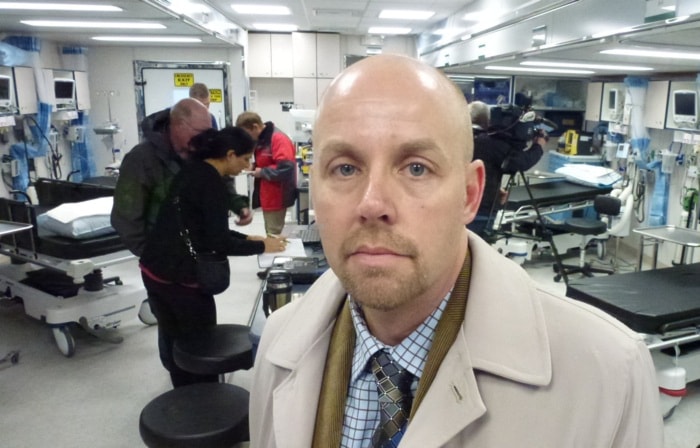The indefinite shut down of B.C.'s busiest emergency department at Surrey Memorial Hospital after a flood there Monday is putting more pressure on already congested hospitals around the rest of the region.
A "couple hundred" emergency patients are likely being handled by other hospitals that would normally be at SMH, said Fraser Health spokesman Roy Thorpe-Dorward.
"We've had reports from [Royal Columbian Hospital] and Peace Arch in particular that have seen more patients than usual," he said.
The ER at Surrey Memorial is now not expected to reopen until at least next week, Thorpe-Dorward said, and it may take two weeks to restore full service.
The first floor was flooded after an excavator broke a water main during construction for the hospital's expansion.
Surrey Memorial's ability to perform surgeries is also crippled because it's only running one out of the usual eight operating rooms so far.
More than 100 elective or non-urgent surgeries were initially cancelled that had been scheduled for Monday and Tuesday and more are expected to be postponed each day.
"A key priority is to get additional operating rooms up and running," Thorpe-Dorward said.
Initially the problem was concern about water and power reliability.
Now, ORs remain closed because diagnostic imaging and other equipment lost or damaged in the flood is not yet back on line and the scramble to handle emergency patients without an ER has left the hospital short of staff who would ordinarily support surgeries.
Patients who arrive at SMH and need urgent help are being treated at a 24-hour urgent care area opened at the Jim Pattison Outpatient Care and Surgery Centre near SMH and a regional Mobile Medical Unit on standby for disasters is now set up there as well to act as a temporary ER.
Less serious cases will be assessed and treated there, while more seriously ill patients will be transferred elsewhere in the region.
Ambulance paramedics are automatically taking patients who would normally go to SMH to other hospitals, depending on where officials determine the most space exists.
All flood water has been removed but work is now focused on drying out the ER and then assessing the restoration work needed and possible damage to sophisticated medical equipment.
"Cleaning will obviously be important as we have to create a sterile emergency environment," Thorpe-Dorward said.
Crews have built a temporary wall at the back of the ER, replacing the one that collapsed Monday when water released by the water main break burst through.
Thorpe-Dorward said the health authority is proud of how ER staff at Surrey performed in the initial moments of the flood when water suddenly gushed through the back wall.
"We learned our staff don't panic under pressure," he said.
Twenty-five patients in the ER were quickly evacuated to other parts of the hospital.
He noted the incident allowed Fraser Health to activate and refine its disaster plans, which set out responses to crises "up to and including the loss of an entire hospital."
